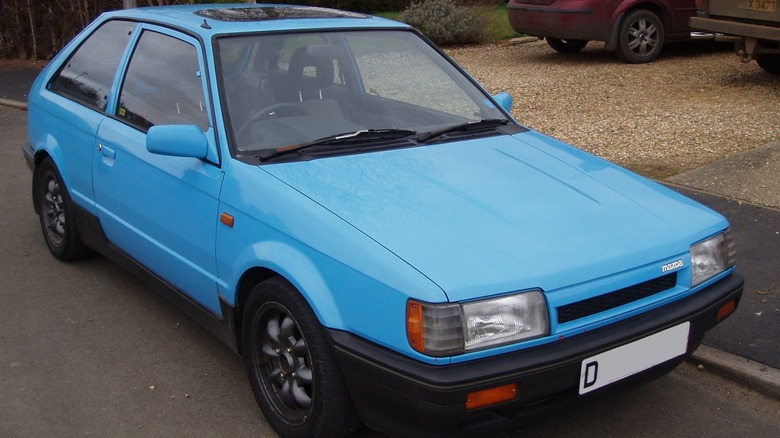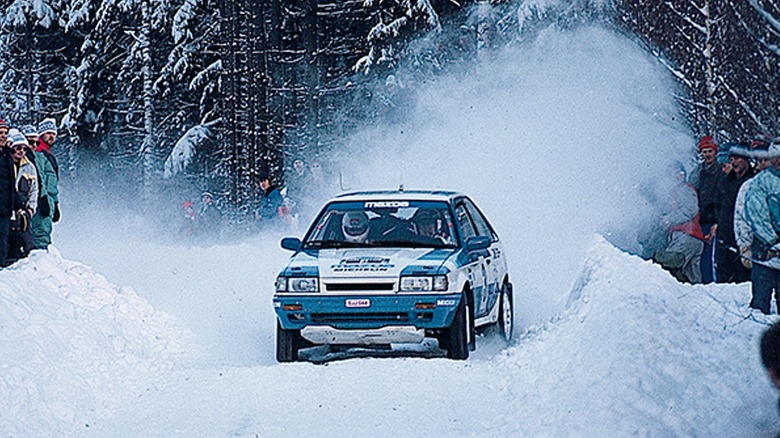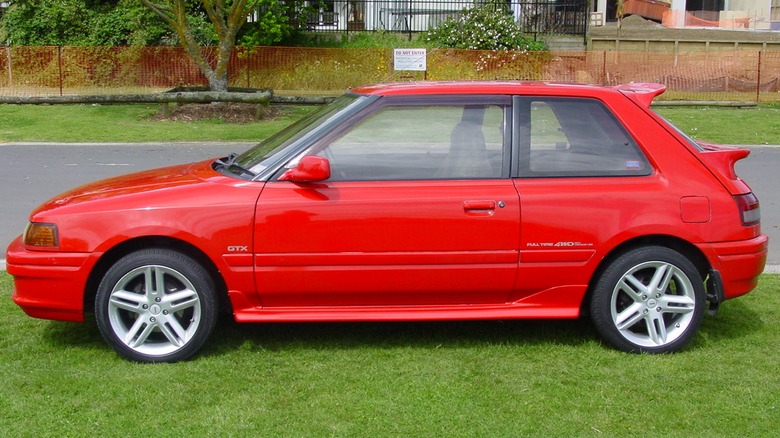All About The Mazda 323 GTX
The little turbocharged Mazda 323 GTX that helped kick off the hot hatchback market slipped into the U.S. market almost under the radar, selling less than 1,300 units here. The GTX was introduced to the U.S. in 1988, and only sold for one more year before disappearing from Mazda's lineup, and was a car that rally enthusiasts in the States discovered too little, too late.
The GTX emerged from a line of economy hatchbacks and sedans known as "Familia" in Japan, and as the 2-wheel drive compact Mazda 323 in the U.S. In the late 1980s, Mazda was looking for its place on the rally car stage, and designed the 323 GTX for Group A class racing. To meet homologation rules, a production version of the race car needed to be available, and what hit these shores in 1988 was one of Mazda's best cars — an AWD, turbocharged 1.6L hatchback literally built to rally out of the box.
[Featured image by Lewis Collard via Wikimedia Commons | Cropped and scaled | CC BY-SA 3.0]
The econobox with rally DNA
Unlike many hatchback rally wannabes, the 323 GTX had standard AWD and a turbocharged 1.6-liter engine that delivered 132 horsepower. The engine was a cast iron block, intercooled to run denser air into the engine for better combustion, which bumped the power up by 50 horsepower over the base engine. The 1988 Mazda 323 brochure described the design as a double overhead cam, 16 valve, fuel-injected motor with center-mounted spark plugs. If that's starting to sound like a Miata, that's because a no-turbo version of the 1.6-liter inline four went into the first MX-5. Why mess with success?
But even a solid engine won't win rallies, so Mazda applied its motor sports learning to the rest of the GTX, adding a 5-speed manual transmission with overdrive, and giving the body a makeover. By the end of the '80s, the 323 lineup had added features like front and rear sway bars and updated suspension for better handling in the lightweight car. The limited edition GTX used the 323's short wheelbase, then widened the stance to compete in the corners with more powerful challengers. A revamped underbody added rigidity to its 2,290-pound weight to handle the brutal pounding a rally car takes.
Before it hit American shores, the GTX had already won Rally Sweden in 1987 with this design. Edmunds.com named the 323 GTX as one of its "100 Greatest Japanese Cars of All Time."
What happened to the GTX?
The 323 GTX was introduced as a limited edition model, but whether it sold for only two years in North America because of a lack of interest at the time — or because of a lack of marketing by Mazda — is hard to say. Since it was created as the consumer version of a circuit rally car, Mazda may never have intended to continue its production and sales.
Another reason might be that since this little racer started life on the lower end of horsepower, competing hot hatchbacks soon swarmed the market with engines that delivered more power right off the showroom floor. Finally, it probably didn't help that the 323 family line was known as "econobox" cars, which isn't a selling point for drivers wanting sports car excitement.
Today, it's difficult to find a used GTX for sale that's in decent shape. Those drivers who valued the car for racing have driven them to pieces. Those who valued the surefootedness of its all-wheel drive for snowy areas have seen the salted bottoms rust out under their feet. A spunky little hatchback, but it went away too soon.
[Featured image by Afterburner33 via Wikimedia Commons | Cropped and scaled | CC BY-SA 3.0]


